Shiva cut off the head,
Not realizing it was his son
Replaced it with an elephant’s
Infinite Wisdom
They pray to Ganesha
Hoping he will bless
To ensure their ventures
End in success
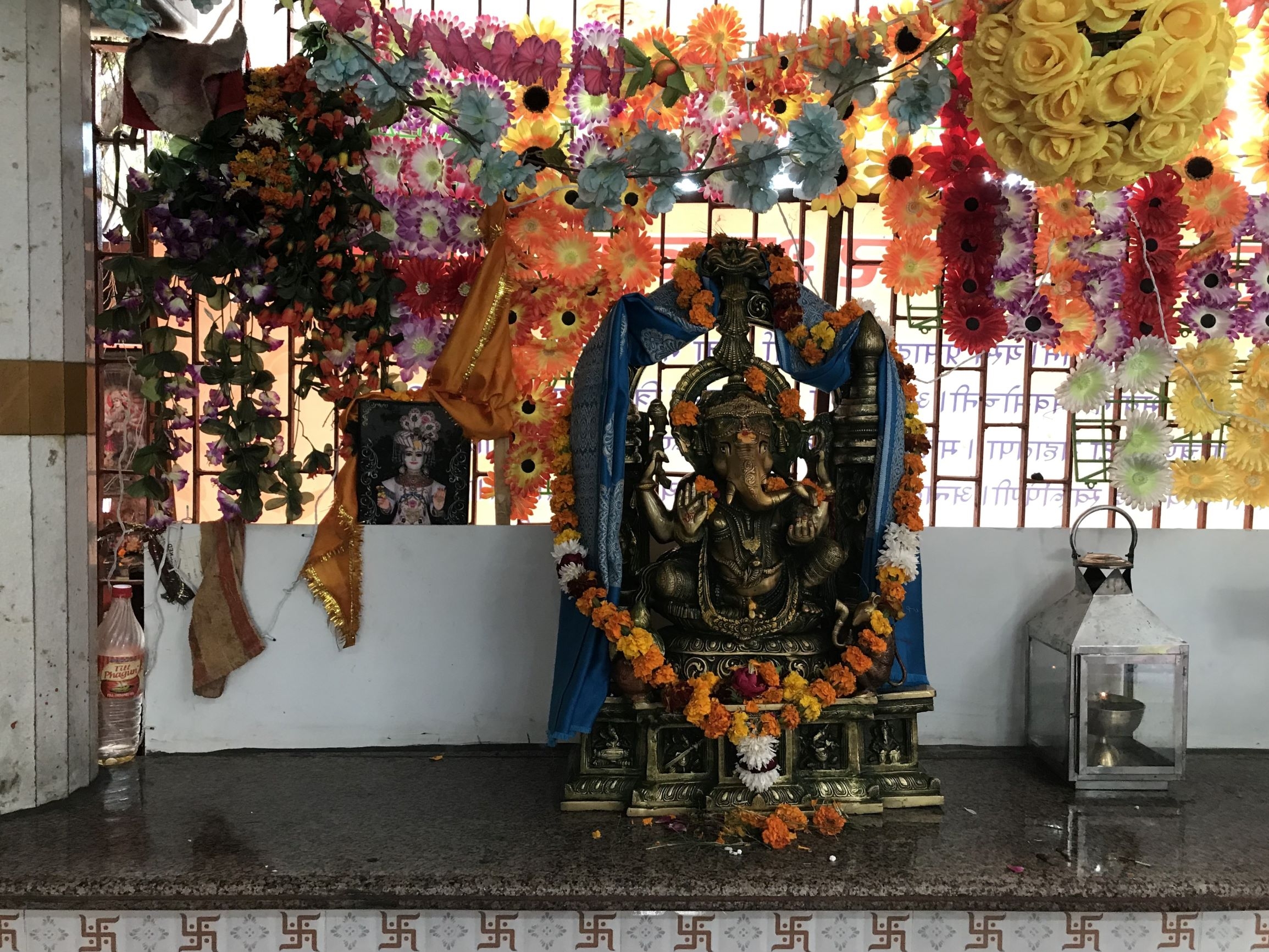
Shiva cut off the head,
Not realizing it was his son
Replaced it with an elephant’s
Infinite Wisdom
They pray to Ganesha
Hoping he will bless
To ensure their ventures
End in success

I really like Indian food. Who knew? I didn’t. No one told me ahead of time. My only warnings were to protect myself with probiotics and take some Immodium and medication should I become sick. “Everybody gets sick when they go to India,” I was warned. I followed a few simple rules: don’t drink the water, don’t eat raw vegetables without skins as they may have been washed, and don’t eat any of the dairy-based products including yogurt. Everything else I ate including street food.
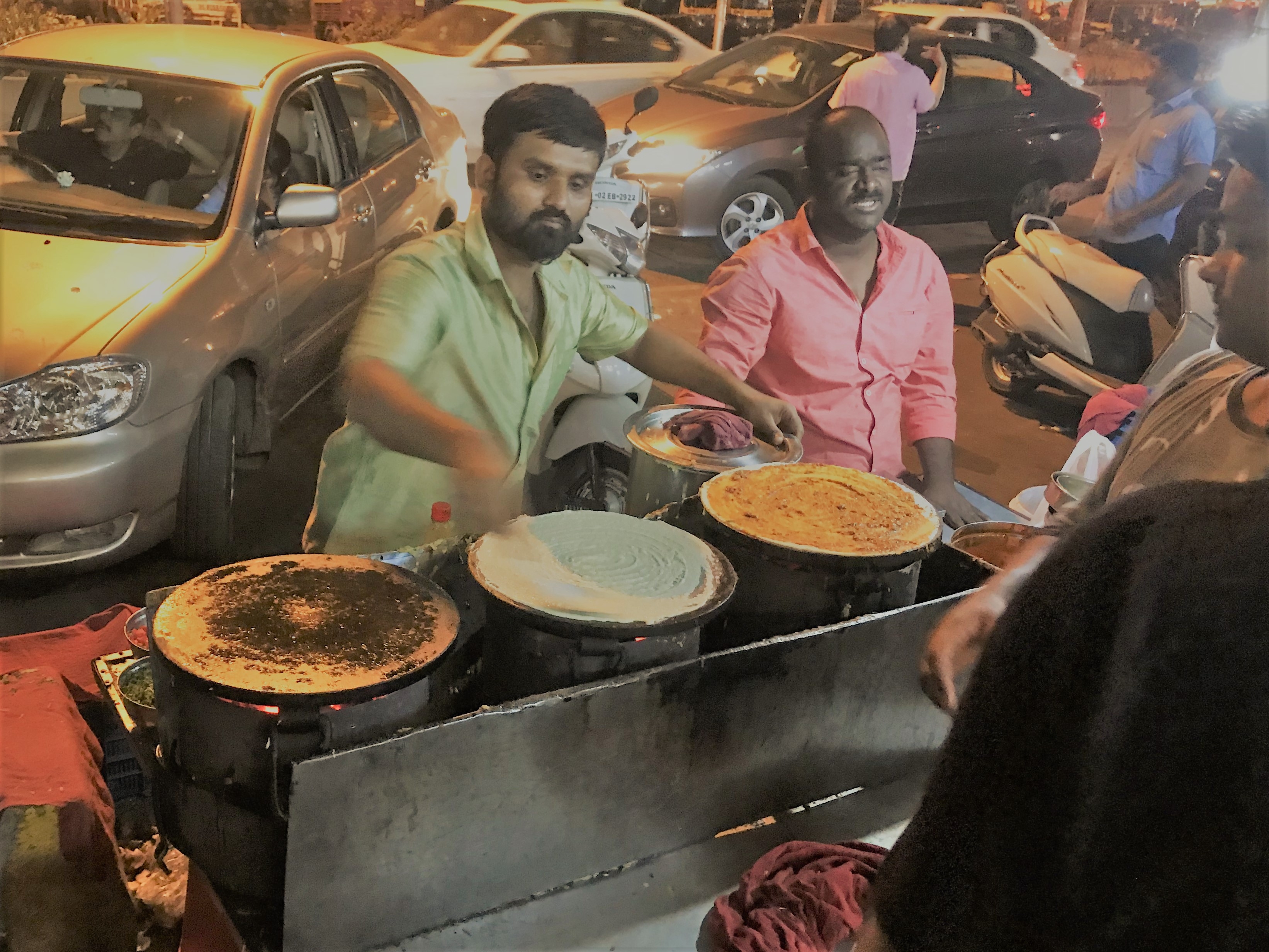
I felt ok eating street food fried in oil as the vendor cooked it thoroughly over his outdoor stove. Another vendor cooked dosa spreading the batter out to make the thinnest of crepes. He spread the stuffing with his hands but the sizzling water on the grill and the cooking time gave me confidence that the food was heated sufficiently to be safe. We sampled many types of bread including naan and other flatbreads, the names of which tend to elude me. I ventured into the kitchen to assist in the making of the flatbread, which looked suspiciously like the burrito shells I eat at home. I’m sure I annoyed the cook with my rolling efforts using the slender black rolling pin to create something more akin to lobed tree leaves than her perfect circles.
I liked every potato dish and sauce I sampled, as long as the spice level didn’t singe my tongue. I enjoyed a version of lentil soup, something I’ve never liked. I have to admit, I wasn’t too crazy about the crunchy eyeball thing, an edible liquid filled eyeball-sized sphere of fried dough, but it was one of the few exceptions. I enjoyed a sauce of mint and cilantro, something that might actually be useful to me since I have a garden full of mint and no time to drink mint juleps.
On the subject of alcohol, it takes an expert to maintain a steady supply in India. Fortunately, our guide is just such a person. She knowingly stocked up on the hard stuff at the airport upon arrival. I only drink the hard stuff in the absence of beer or wine or of good sense. I thought I would be happy with beer. But some states are actually dry and the states that aren’t dry have strange rules about consuming alcohol in public places. The public places include the inside of restaurants. But with Stoli’s masquerading as a plastic bottle of lemonade and other subterfuges, we managed just fine.
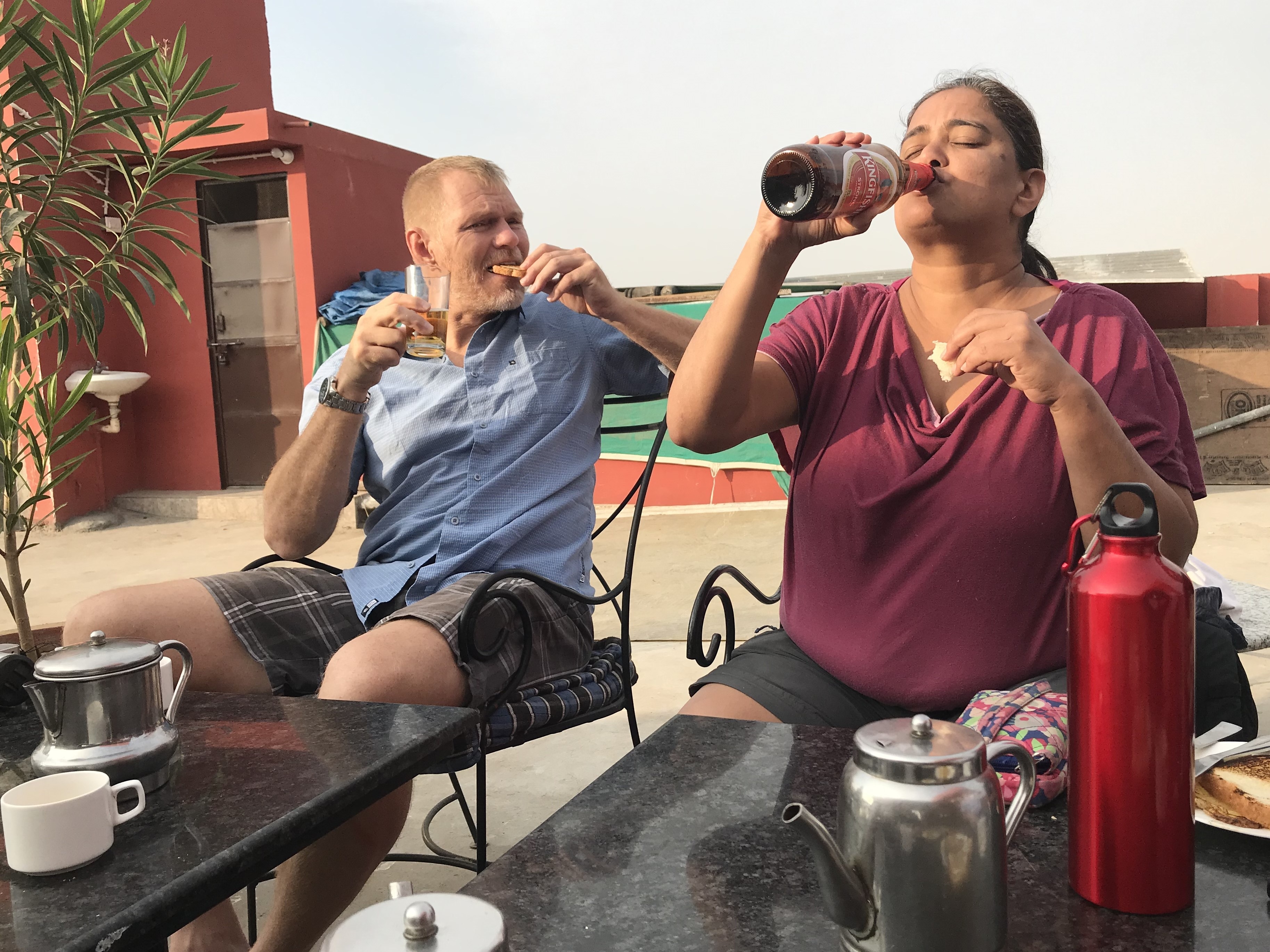
A cold virus thwarted our efforts to engage in meditative practices at the Ashram in Rishikesh. Perhaps, it is fitting and appropriately humbling that a simple virus dictated our spiritual destiny on that day by subduing many on our team. We settled for a walk through the Ashram yard and a stroll along the ersatz boardwalk of Rishikesh on the Ganges river. I floated a paper boat full of flowers, a burning candle and a burning incense stick down the river. I saw several guru types in orange robes, orange turbans, sandals, and long grey beards begging for money. Apparently, the yogi business isn’t doing so well.
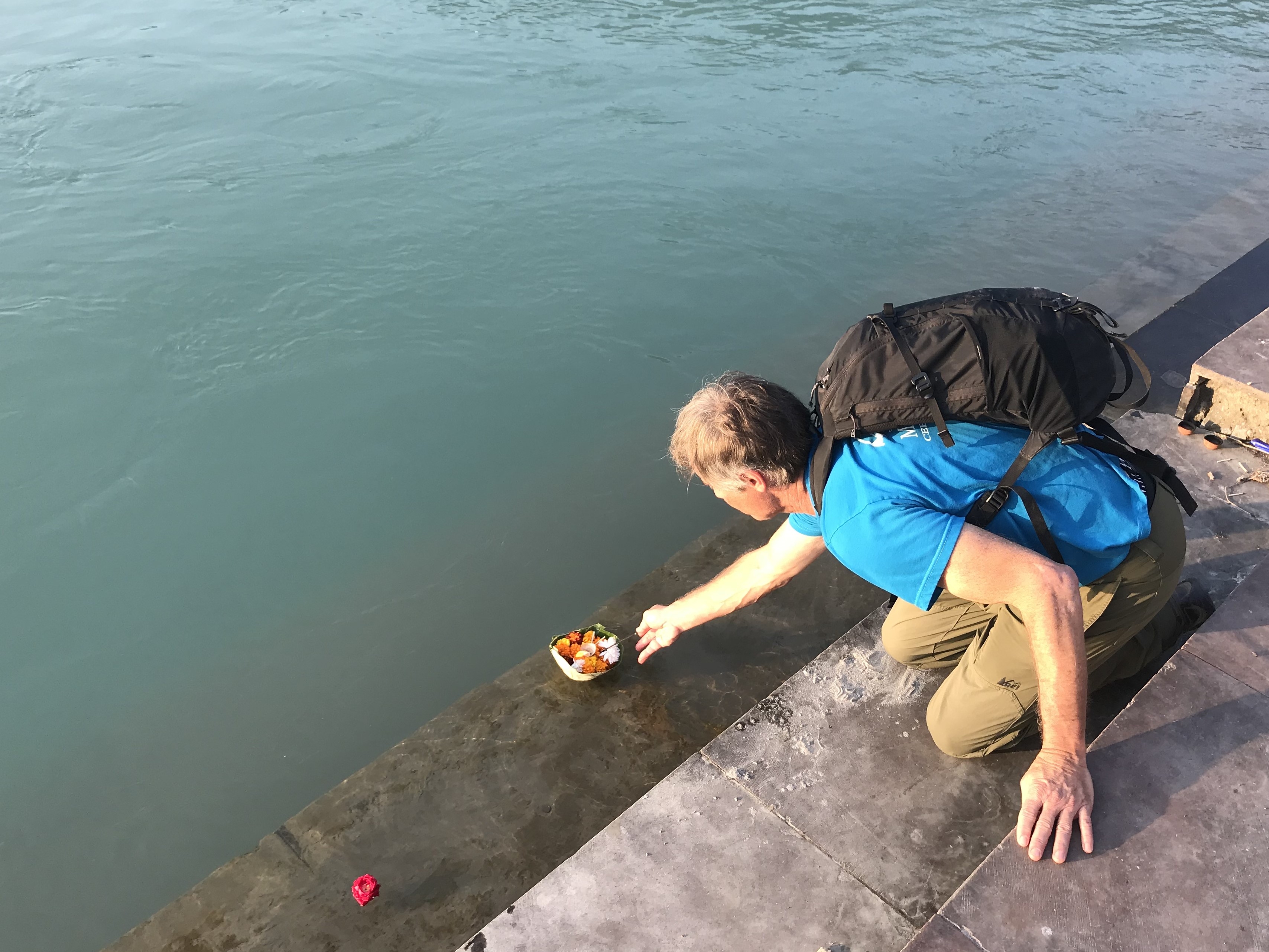
India offers many opportunities for exposure to spiritual and religious practices. In Haridwar, we climbed the three-kilometer route along with masses of pilgrims to the Hindu Mansa Devi temple. Having deposited my purchased offerings at the base of a tree, we decided not to fight the smush to view the shrine. Just as we were about to leave, we caught the attention of someone who granted us foreigner privilege to bypass the packed mass of pilgrims to kneel before the actual shrine. I offered the appropriate cash supplications to the goddess in return for a piece of candy. As I was kneeling at the shrine, the hordes of pilgrims streamed by in a scrunch of humanity throwing their supplications over the waist-high wall behind me that separated them from me and the shrine. It seems totally wrong to me that it should be so. I shouldn’t have taken the place of someone who believed just for the experience of going through the motions.
At night time, we attended the festival of the first full moon after the Indian New Year on the Ganges. Only as I write do I know the festival name is Kartik Purnima and that any form of violence (
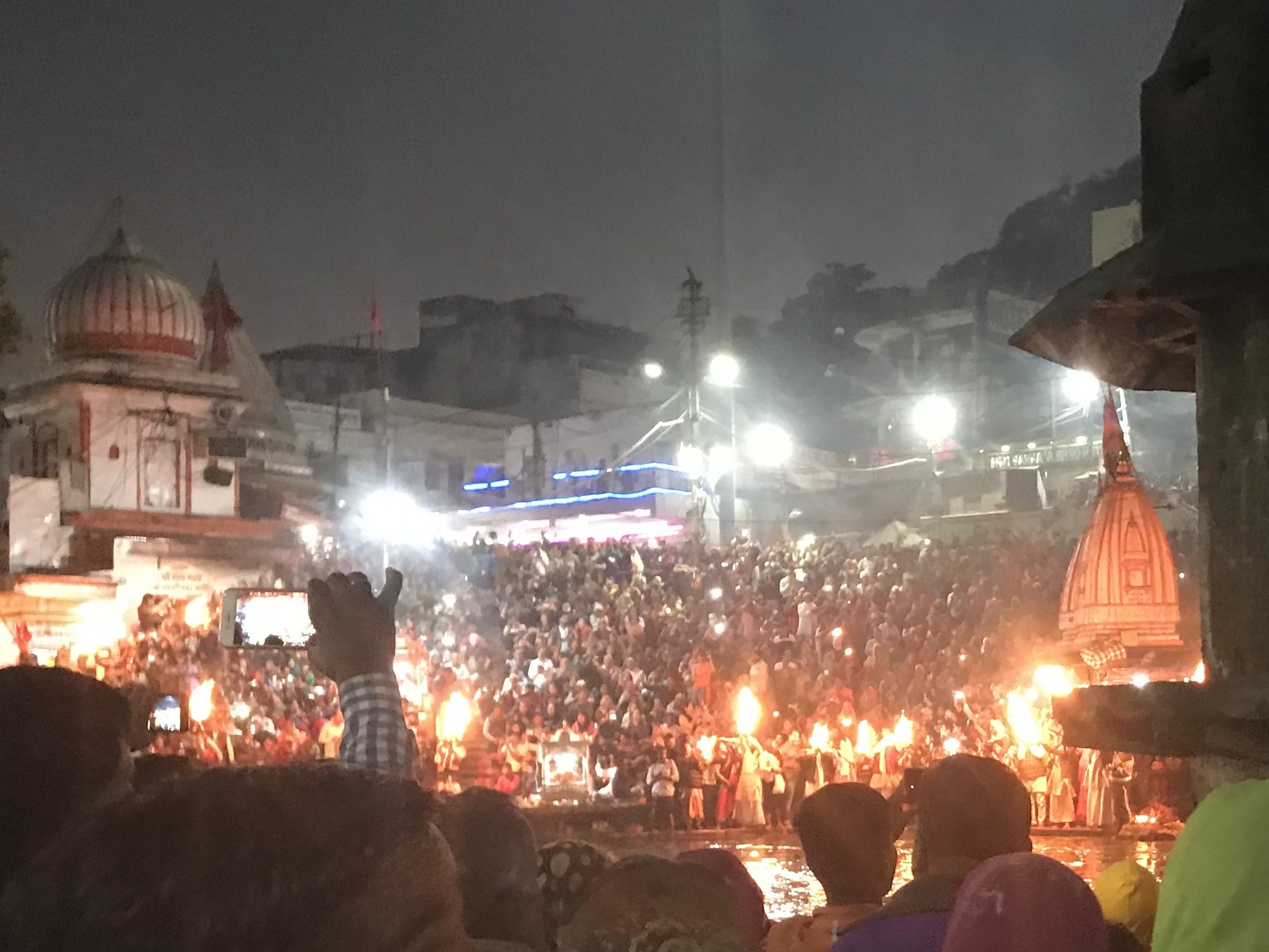
Back in Delhi, we visited the impressive Lotus temple created by Bahá’í practitioners who preach unity of religions and people. If I had to choose a religion, I think this one would be a good one to select. The preaching of religion is always to unify, but somehow the end result is always to separate. Is Bahá’í call to religious and human unification achievable, or yet just another religion to choose from? In the Lotus temple, each is allowed to pray according to their own preferences and predilections. Once again I went through the motions, I sat briefly with a blank mind. I had no supplications to offer. After a few seconds, I up and left.
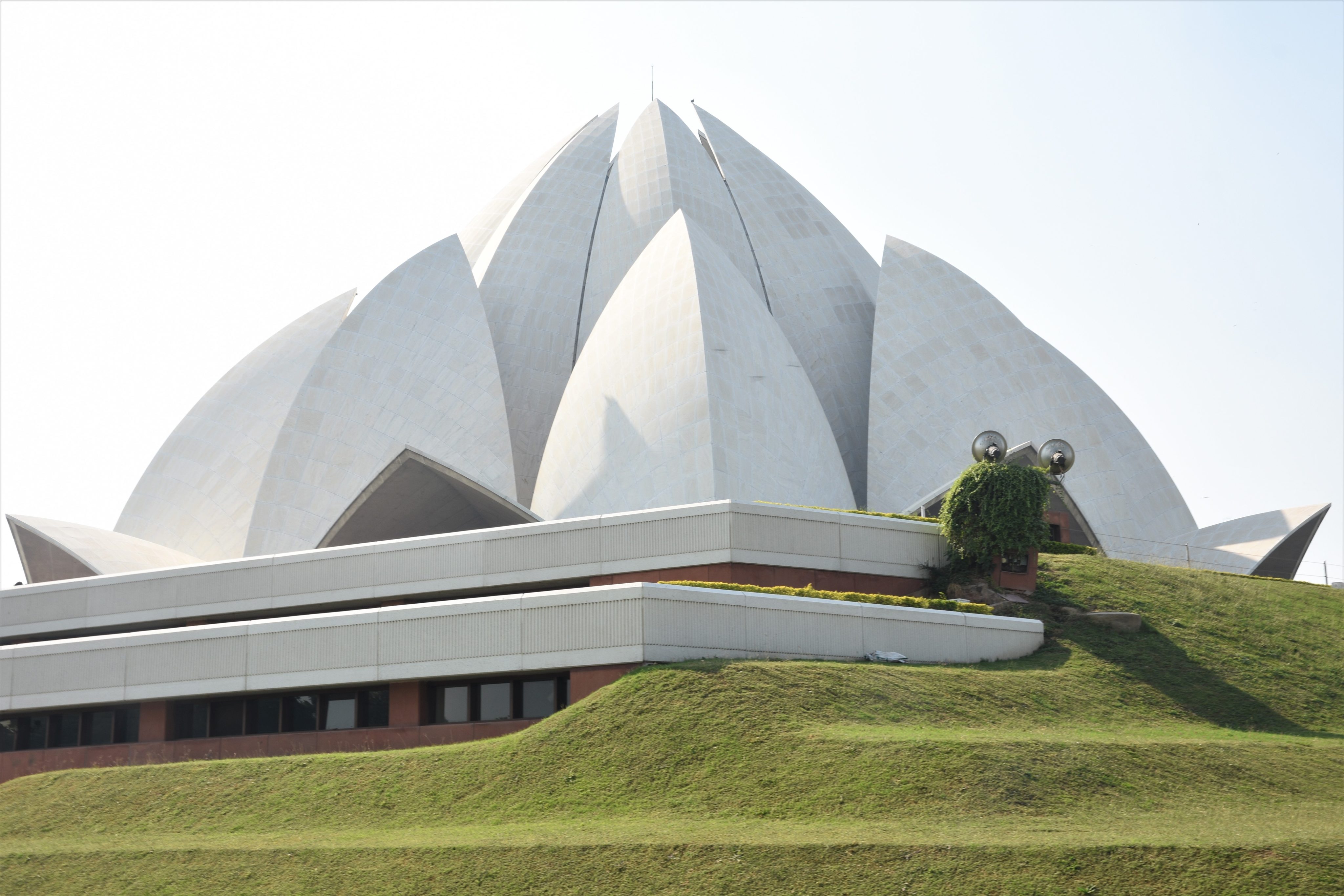
So now that you fear for my soul-less existence, I will move on to the things that did move me in a positive way. On the visit to the Gandhi museum, I saw Gandhi’s glasses in the display of all of his earthly possessions at the time of his death. Those glasses defined him. I had a visceral wow moment when I saw them.
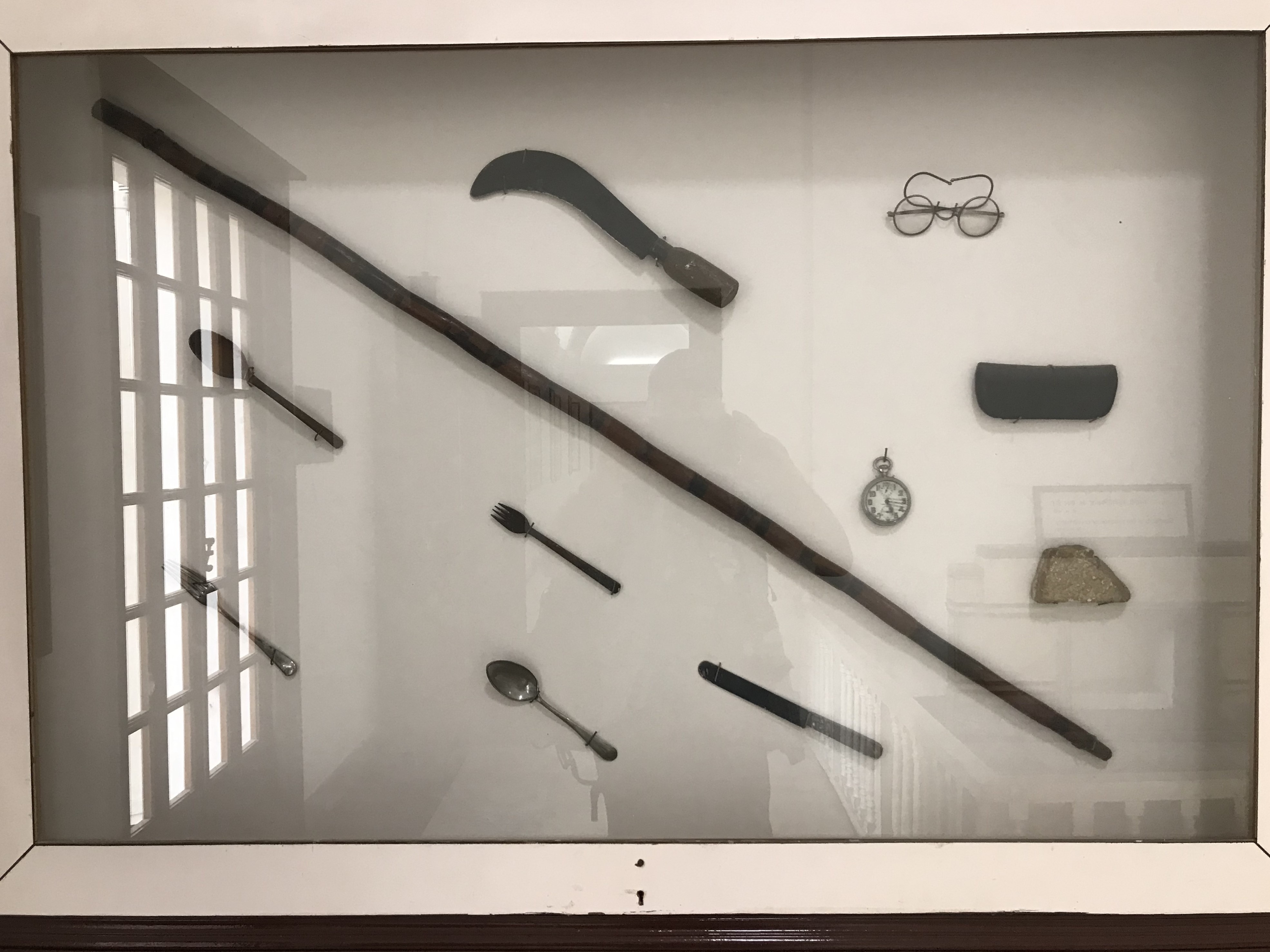
To me, Gandhi was the real deal: a man that lived up to his own lofty words to be the change he wanted to see in the world. He is the man that set India free. What would he think of his legacy? And why was one of his few earthly possessions a rock?
I was moved by our stop at a rural school to hand out food and school supplies to needy children. Not my inspiration nor even financial contribution, I just happened to be there when it happened. One of our team creates a care package for needy people in the countries he visits.
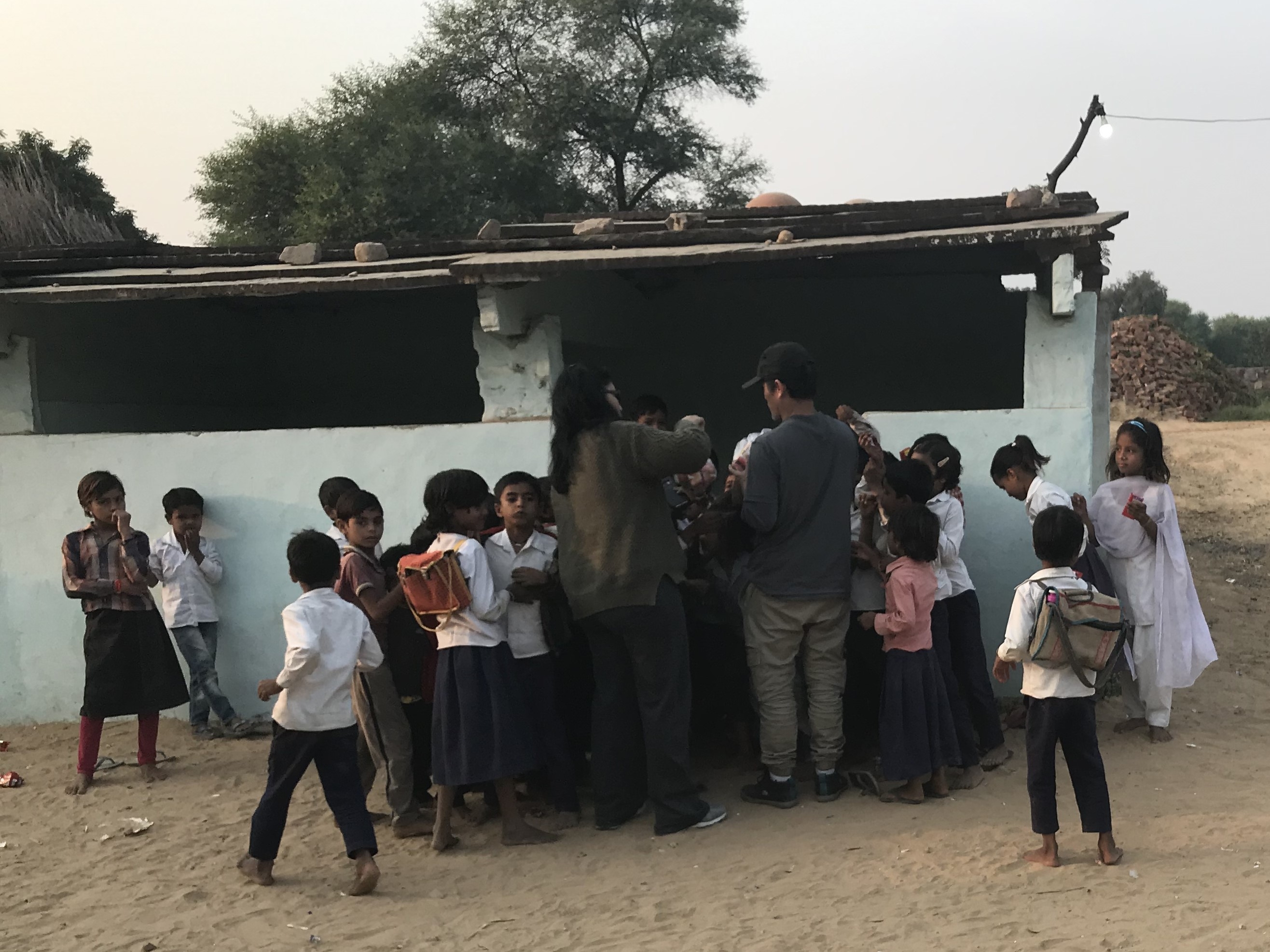
It was really satisfying to give the kids their treats and school supplies. I hope it was actually useful. I think every little bit helps. I was happy to be a part of the effort.
And finally, I was moved by the Himalayas from the moment they revealed themselves near the end of a three thousand foot, two thousand
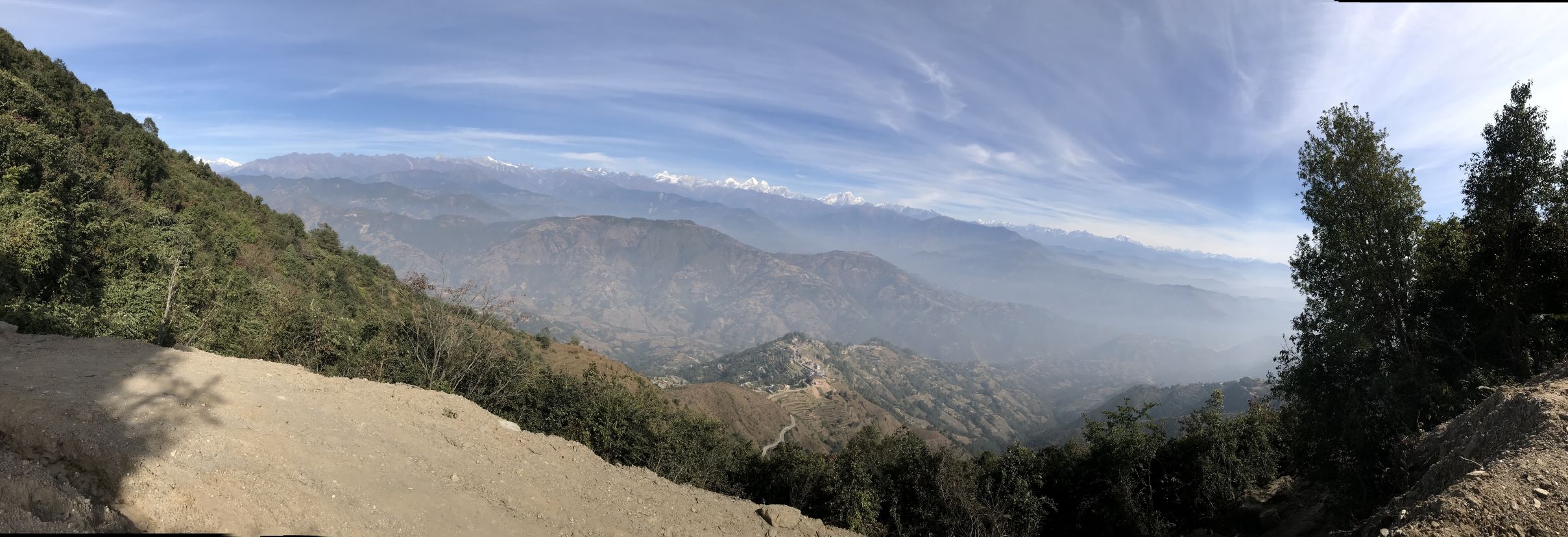
Love in India comes with too high of a price tag as far as I’m concerned. I concede that this is the biased point of view of a happily single man. The whole culture of love seems to revolve around the wedding. The women parade around the streets in nothing but their colorful, silken wedding attire at all times, at least that’s my interpretation. We saw several wedding parties spilling out into the streets. A man gets a few goats and some furniture and he is stuck for life. The stigma of divorce keeps the divorce rates extremely low by American standards but its hard to gauge the corresponding happiness index on either side of the gender divide. If men have to stick around to raise their children, I would concede the stigma of divorce serves a useful purpose.
I met only one woman on the trip I would consider marriage material – a lawyer working for the Indian Navy named Amica. She is attractive, personable, and smart – the only person to beat me at scrabble in a couple of years clinching her victory with the
Reading Time: 3 minutesThe Taj Majal doesn’t emerge slowly from a distance. We turn the corner and there it is, maybe a mile or two away, glaring in its whiteness and larger than life. A wow moment, unmistakable. It looks equally impressive through the embrasures and decorative openings of Fort Agra.  Up close, our guide drones on about the construction story. It took twenty-two years, a Persian designer, a board of architects, twenty thousand laborers, and a thousand elephants to build. Design and detail everywhere on the building. Up close, I can see the intricate patterns, the huge blocks of marble, and the attention to symmetry. But I don’t need to hear all the detail or even see it. The Taj is the forest and not the trees. The guide gets frustrated as our group drifts to appreciate and photograph rather than absorb useless facts and get suckered into a post-Taj shopping misadventure.
Up close, our guide drones on about the construction story. It took twenty-two years, a Persian designer, a board of architects, twenty thousand laborers, and a thousand elephants to build. Design and detail everywhere on the building. Up close, I can see the intricate patterns, the huge blocks of marble, and the attention to symmetry. But I don’t need to hear all the detail or even see it. The Taj is the forest and not the trees. The guide gets frustrated as our group drifts to appreciate and photograph rather than absorb useless facts and get suckered into a post-Taj shopping misadventure.
The Taj is a mausoleum and my mind wants to fill in a story. Why did you come to be, Taj? Who spends the equivalent of a billion dollars on a dead person? Shah Jahan created the mausoleum for his third wife, apparently his favorite. What about the first two? How come they didn’t rate? They have smaller mausoleums outside the grounds somewhere but nowhere near as impressive as the Taj for Mumtaz Mahal, the chosen one, the jewel of the palace, his third wife. Did they have something to do with her demise? It sounds suspicious to me. I can only speculate about the missing backstory but isn’t that how good myths get started?
The conventional storyline is love. Is the monument the physical manifestation of their love? How much love do you have with three wives and a rotating harem of a thousand women recruited at the age of twelve and retired at the age of eighteen? I have to resist the urge to judge based on my modern values. He loved her fourteen kids worth, she obviously living in perpetual pregnancy. Some claim it is a monument to his guilt. Did he push her down over a power struggle causing her to die in childbirth? Or because she beat him again at a game of chess, his intellectual superior? The story is Mumtaz. She is reported to have been beautiful, smarter than the Shah, and ambitious: a deadly combination in the game of thrones of any empire.
The guide perpetuates the myth of the black Taj. A mirror copy of the Taj, the Shah’s plan for his own death. The Black Taj suggests vanity and legacy more than love. In the storyline, the youngest son defeated his older brother and imprisoned his father to keep him wasting another billion dollars worth of power. My Wikipedia research back home shows the only real reference to the black Taj is in a throwaway line in the writings of a European traveler. The Shah took ill and given up for dead, the youngest son won the ensuing power struggle meaning he helped the older brother to detach from his head. The Shah recovered but the youngest son imprisoned him to maintain his power.
Back in modern times sans the black Taj, we use foreign privilege to jump the line to view the interior of the mausoleum. 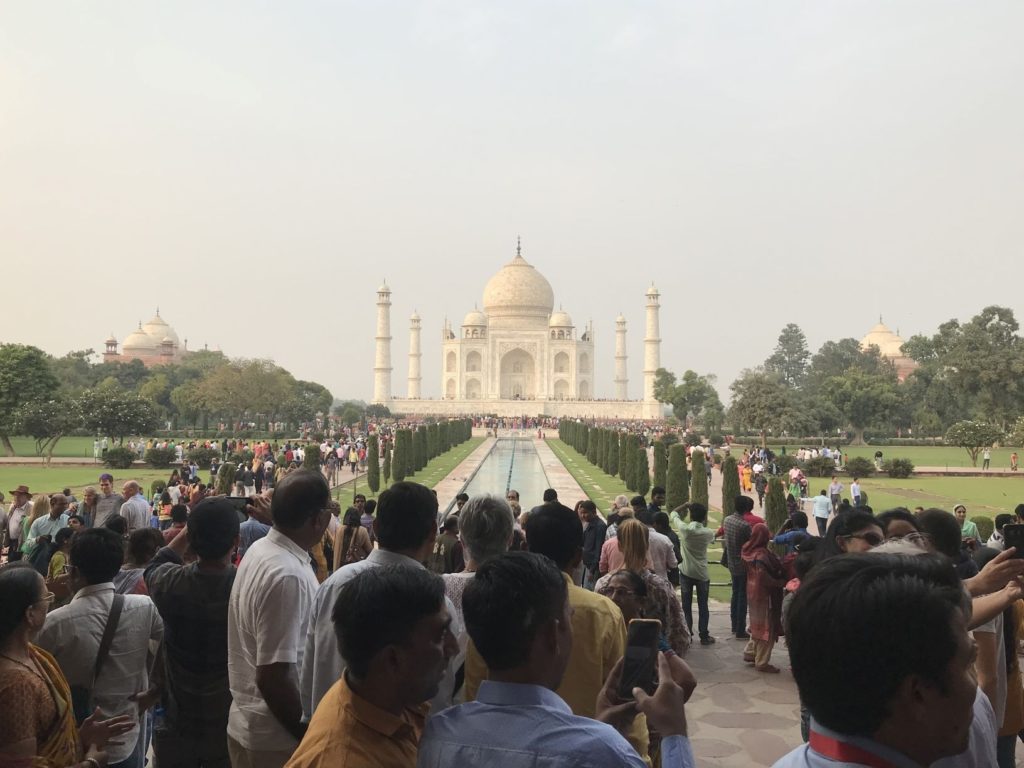 Indian tourists wait in a line that wraps completely around the building into a marble courtyard filled with a maze of twists and turns for the privilege of seeing the inside. I don’t know what it means to them to justify waiting for so long. We are rushed around the gravesite so that the throngs of visitors each has their chance at a viewing before closing time. Muslim law forbids the elaborate decoration of graves. The Shah followed the letter of Muslim law more so than its intent, judging by the excessively ornate and elaborate surroundings. Only the graves themselves are plain.
Indian tourists wait in a line that wraps completely around the building into a marble courtyard filled with a maze of twists and turns for the privilege of seeing the inside. I don’t know what it means to them to justify waiting for so long. We are rushed around the gravesite so that the throngs of visitors each has their chance at a viewing before closing time. Muslim law forbids the elaborate decoration of graves. The Shah followed the letter of Muslim law more so than its intent, judging by the excessively ornate and elaborate surroundings. Only the graves themselves are plain.
I’m not sure the Shah and Mumtaz get much rest or peace disturbed by hordes of visitors and the dissonance of speculation, myth, and innuendo.
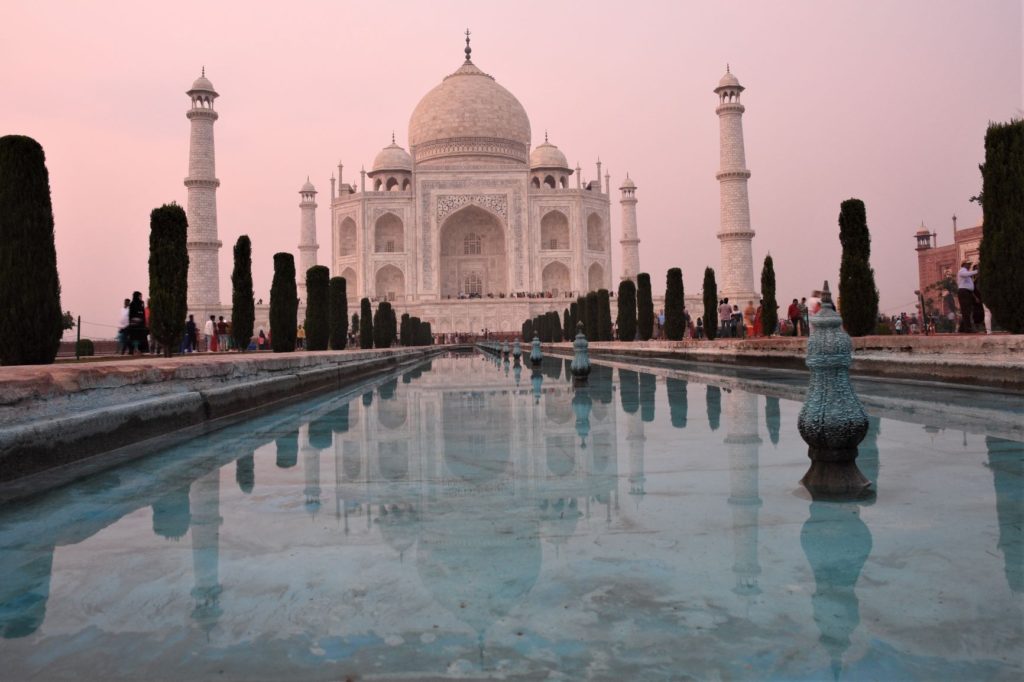
Reading Time: 5 minutesThink of any crowded shopping mall you might visit during the peak Christmas shopping season. Have some of those people push wooden carts of food and clothes around. Allow the dogs, goats, pigs, and cows from a nearby farm to intermingle with the shoppers. Redirect a bike lane into the shopping mall down its corridors, make sure you don’t mark off any special lanes for the bikes. Open up the mall to all the scooter, motorcycle, and car traffic so it can pass through. Have every vehicle beep its horn every time it approaches another vehicle. You will have the beginnings of the chaos of a typical road in Delhi.
Driving down the street is a test of will. The driver plays flinch (or perhaps you call it chicken) with every approaching vehicle. To use your turn signal or to allow a gap between you and any other object is a sign of weakness. The distance between any two moving objects is centimeters. I could easily open my window and have a face-to-face conversation with the driver next to me. I could reach out and shake his hand, “Namaste! Hey, how’s your day?” Except he’s too busy talking on his cell phone as he navigates through the target rich environment of the on-road shooting gallery. Any crack or crevice or break in the traffic is filled up immediately with a taxi or a car or a motorcycle like an endless game of tetras.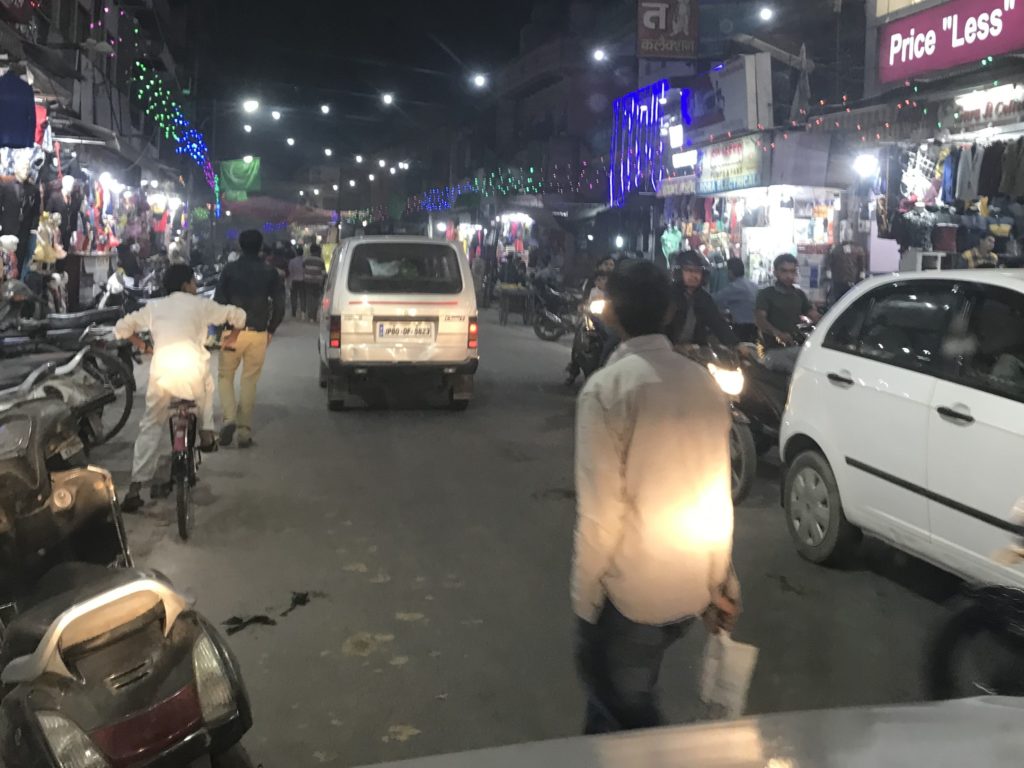
Intersections are the ultimate test of will with traffic weaving in and out like the crossing strands of a wooden basket. A lady guides her mother fearlessly across the street at an intersection never pausing. A dog crosses the street at the roundabout following rules of engagement I haven’t quite solved yet. A cow lies indifferently in the middle of the street.
Just another day for the drivers that transport us from here to there. Nothing to do for us passengers but cringe at the chaos and watch the endless parade of sights on the streets of India.
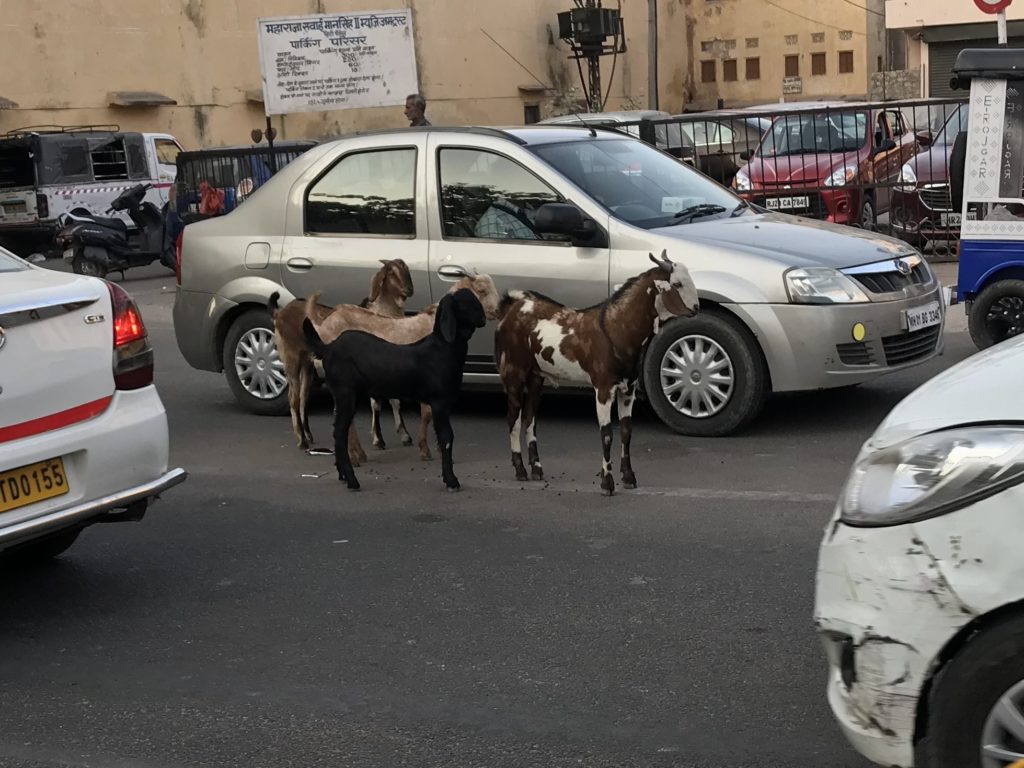
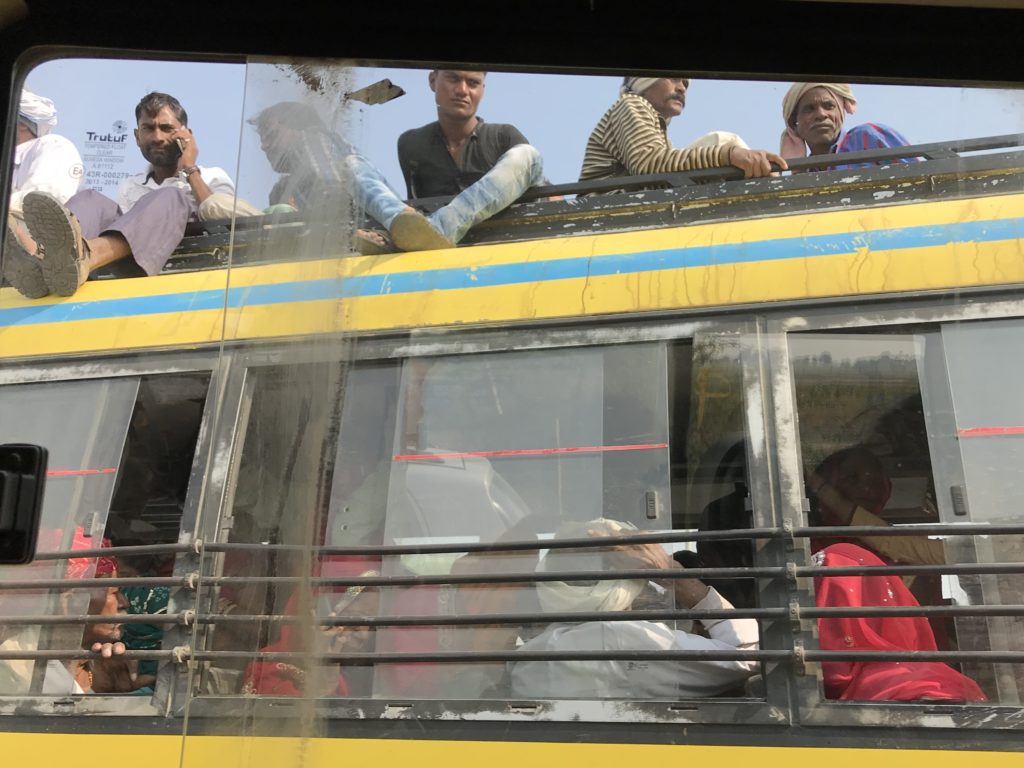
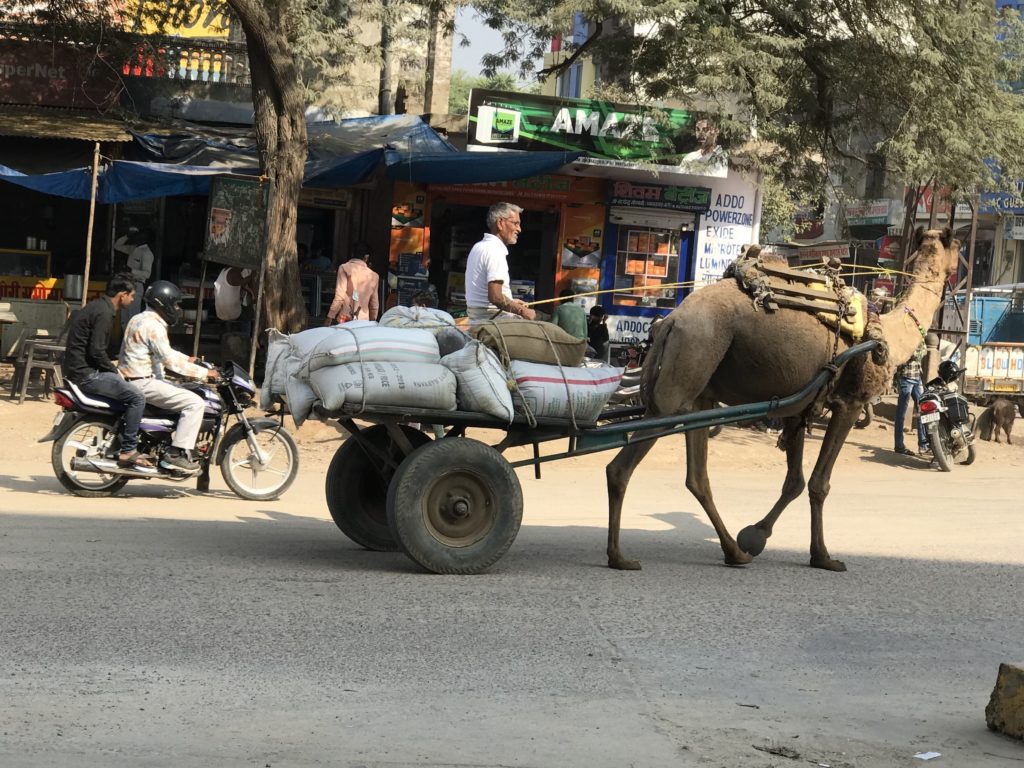
The smell of India is overwhelming. It’s tempting to keep the window closed. The haze is thick, it makes my eyes burn and throat hurt. Burning garbage rises into the air. The smell of urine passes by. Cooking food and incense lift into the air in a cacophony of smells that even my underpowered nose can smell. The composition of smells is the smell of India.
Always the honking. So often you don’t notice. Buses and motorcycles and cars warning cars and motorcycles and trucks and pedestrians and bike riders and cows. Whether you like it or not, this driver has intent and resolve. Make room. Get out of my way. An impatience of horns? A rudeness of horns?
The sights and smells and sounds of the street. If you want a hint of the experience, try here: https://www.facebook.com/michael.david.angel/videos/10214752551780443/?t=3
Reading Time: 3 minutesI’ve joined elite company by circumnavigating the globe on a single trip. Of course, Magellan was the first to do so, but not really. He attacked the natives on the shores of Lapu-Lapu on Cebu in the Philippines, now named after the chief Magellan wanted to convert to Christianity, losing his life for his efforts. Although, he gets credit for the circumnavigation, Juan Sebastián Elcano is the man that actually completed the job. Elcano abandoned one of the boats because so many of his crew died, he didn’t have enough people to sail all three boats. Fortunately, on my journey we kept casualties to an absolute minimum.
Yuri Gagarin is the first man to circumnavigate the globe in a space ship. His capsule had about the same amount of elbow room as any one of my flights. We both circumnavigated the globe in a tight fitting cushioned chair. I think his inflight movie might have been a little better than mine and he only had to endure his discomfort for 108 minutes rather than 40 hours spread out over two weeks but at least I didn’t have to eject from the plane after an 8g reentry to secure a safe landing.
Amelia Earhart attempted one of the most famous circumnavigations of the globe traveling east. She fell short crashing somewhere in the South Pacific. I suspect flying a small plane with limited nav and comm equipment is far more of an adventure than basically moving your compressed living room around in the sky, akin to driving a scooter in Dehli traffic rather than riding in an air-conditioned tour bus. When the person in front of me reclined their seat, I was so close to the flatscreen that my glasses needed glasses to see it.
I took the westward route. Our jet skipped over the night losing a day forward traveling from Los Angeles to Guangzhou in fourteen hours. 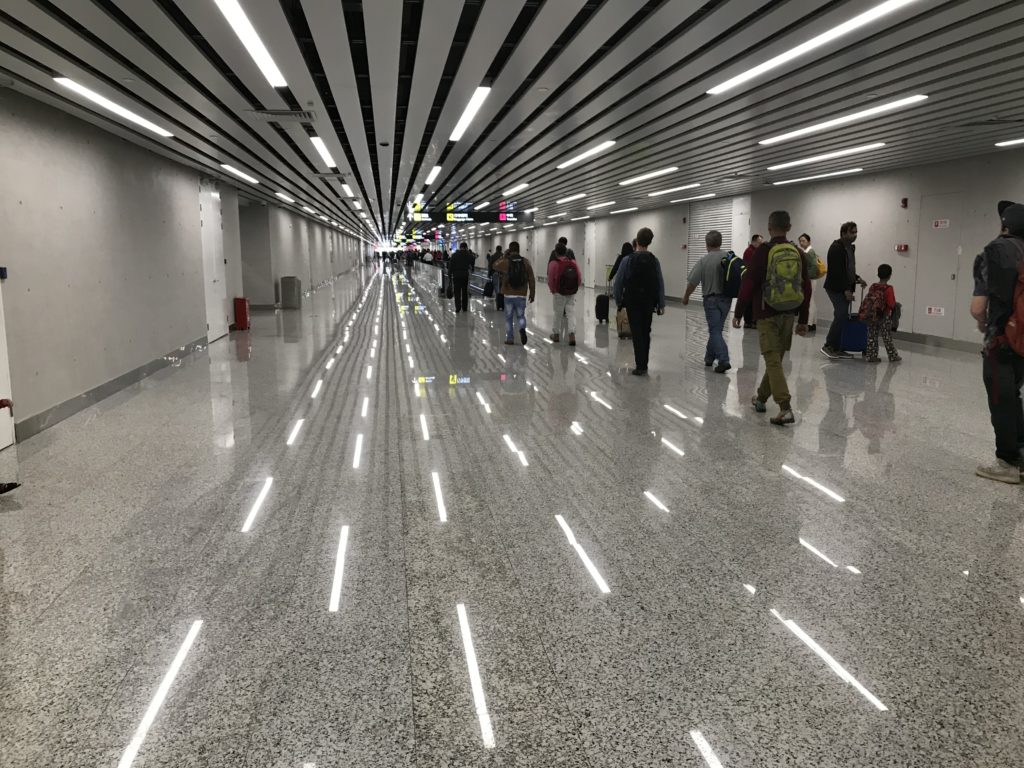 The flight landed behind schedule so my lasting memory of China is rushing to catch a connecting flight in the dashed lighting and
The flight landed behind schedule so my lasting memory of China is rushing to catch a connecting flight in the dashed lighting and  reflections of the hallway leading from one terminal to another. On the five hour flight from Guangzhou to New Delhi, I can’t see India, it is covered in a skin of haze and ozone as far as the eye can see, except for the Himalayas, which have the good sense to rise above to get a breath of fresh air. Even from hundred miles away, the snow covered mountains tower over the horizon.
reflections of the hallway leading from one terminal to another. On the five hour flight from Guangzhou to New Delhi, I can’t see India, it is covered in a skin of haze and ozone as far as the eye can see, except for the Himalayas, which have the good sense to rise above to get a breath of fresh air. Even from hundred miles away, the snow covered mountains tower over the horizon.
The route retrograded to Katmandu for an up close and personal experience with the Himalayas before making forward progress again to Mumbai bidding the mountains a final farewell. 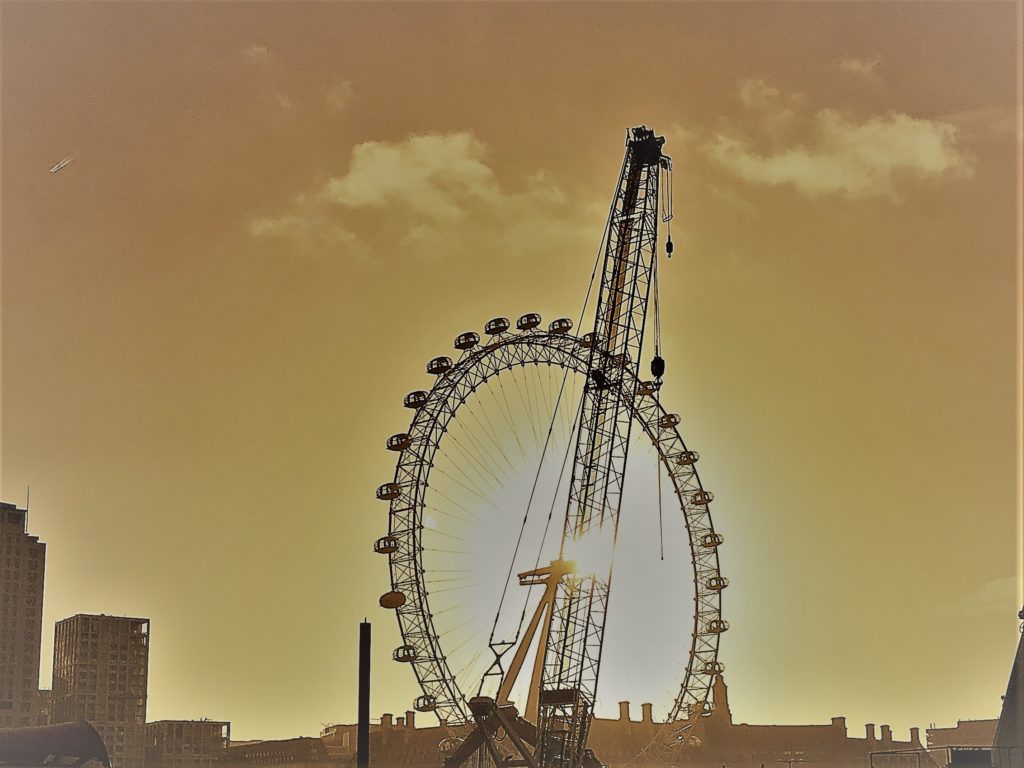 On the return day of the voyage, I have a glass of wine in Mumbai at 2am, a glass of wine dumped in my lap inflight, a cup of coffee in London at 9am, aerial pictures of Greenland, and a safe arrival in San Diego at 5pm traveling over twelve time zones in twenty seven hours.
On the return day of the voyage, I have a glass of wine in Mumbai at 2am, a glass of wine dumped in my lap inflight, a cup of coffee in London at 9am, aerial pictures of Greenland, and a safe arrival in San Diego at 5pm traveling over twelve time zones in twenty seven hours.  How many people can say they’ve had a day like that? How many can say they’ve circumnavigated the globe in two weeks time?
How many people can say they’ve had a day like that? How many can say they’ve circumnavigated the globe in two weeks time?